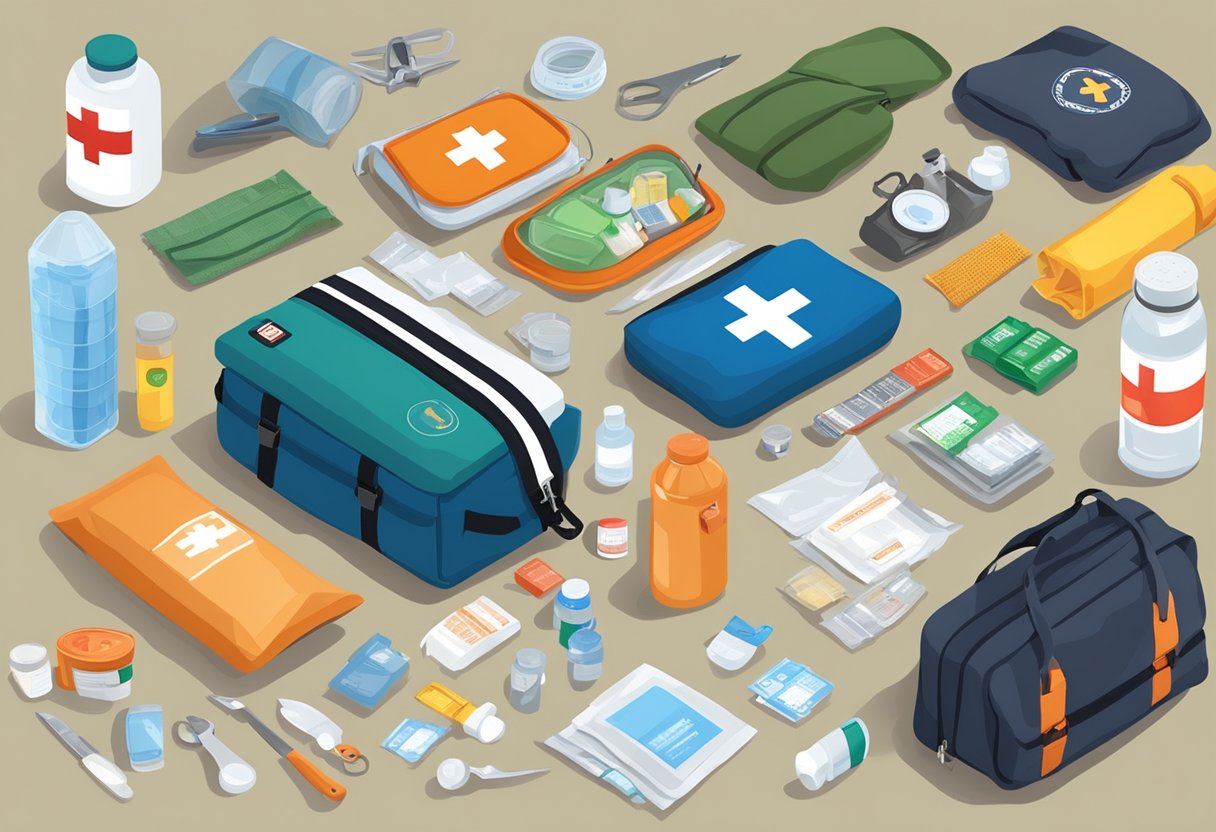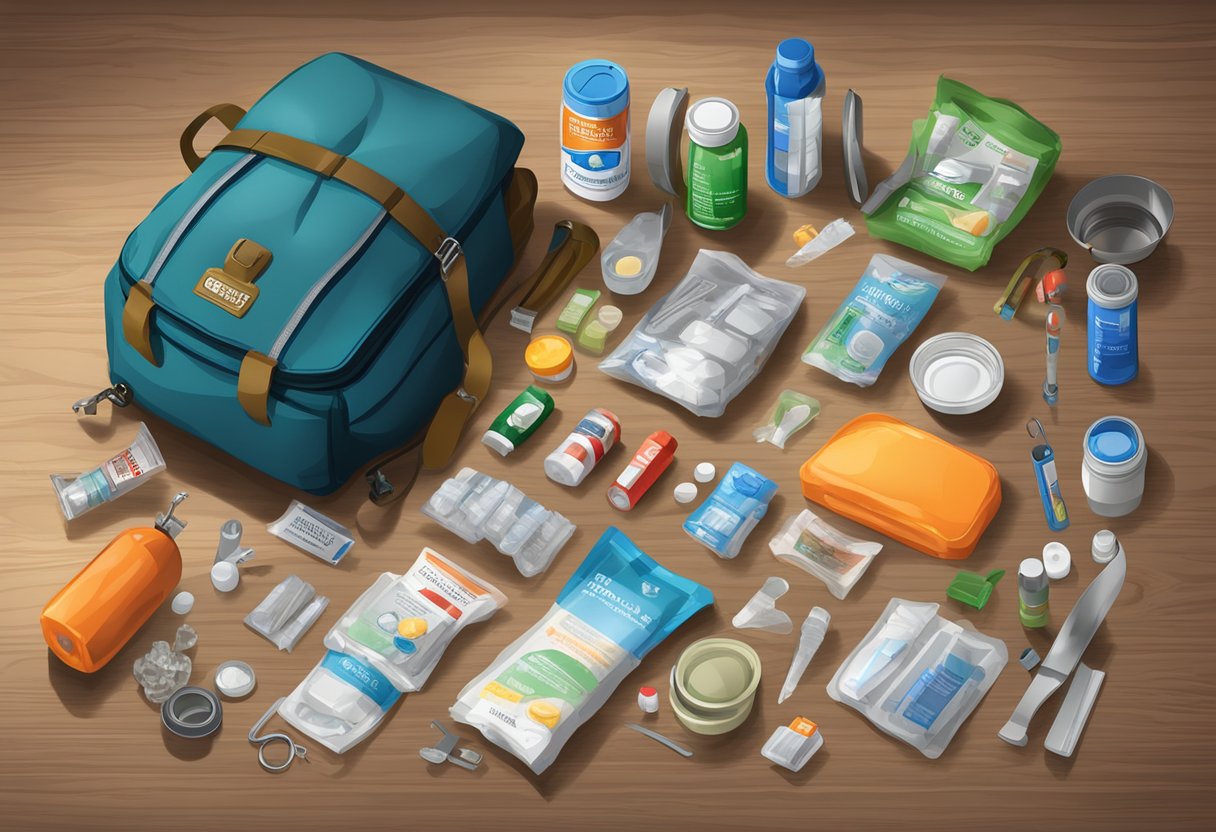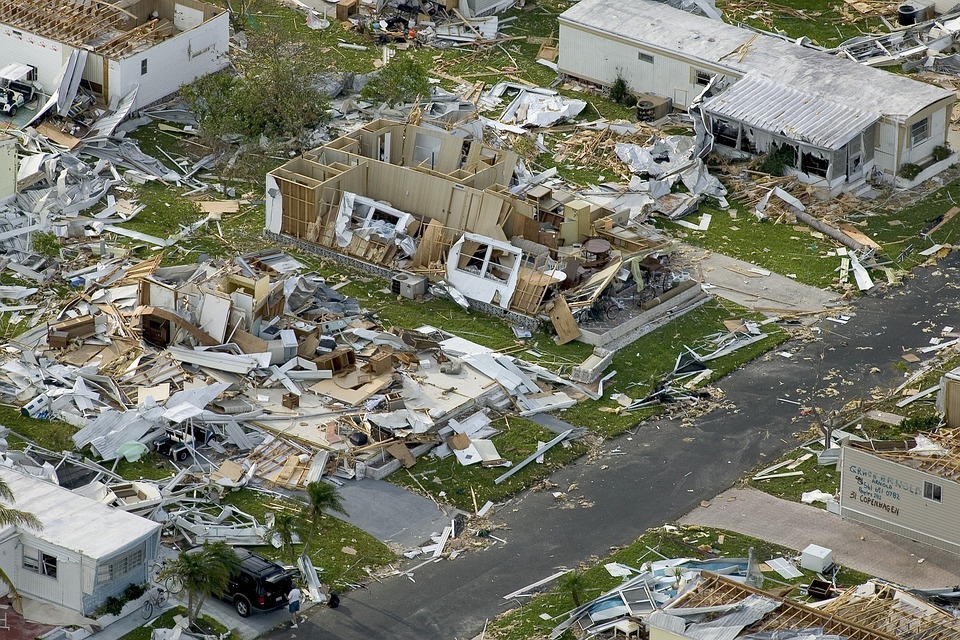What are the Different Types of Emergency Survival Kits? A Comprehensive Guide

An emergency survival kit is a vital tool for staying safe in unexpected situations. These kits come in different types, each tailored to specific needs and scenarios. Having the right kit can make a significant difference during emergencies, ensuring you have crucial supplies when you need them most.
There are basic first-aid kits for treating minor injuries, which may include band-aids, antiseptic ointments, and over-the-counter medications. More comprehensive survival kits, such as a 72-hour emergency bag, can contain food, water, and essential shelter elements like emergency blankets and ponchos. These kits are designed to sustain an individual for a few days until help arrives or the situation improves.
Specialized kits also exist for specific emergencies like earthquakes, hurricanes, or vehicle breakdowns. For instance, an earthquake kit might include heavy-duty gloves and dust masks, while a car emergency kit could have jumper cables and flares. Understanding the different types of emergency survival kits ensures you’re prepared for whatever comes your way.
Understanding Basic Survival Kit Needs
When putting together a survival kit, certain essential items must be included to ensure safety and comfort.
- Water: A reliable water supply is crucial. Include water bottles or pouches, and consider carrying a portable water filter or purification tablets.
- Food: Pack non-perishable items like canned goods, energy bars, and dried fruits. These should have a long shelf life and be easy to prepare.
- Shelter: An emergency blanket, a small tent, or a tarp can provide essential protection from the elements. These items are lightweight and easy to pack.
- First Aid: A basic first aid kit is critical. Include items like bandages, antiseptics, pain relievers, and any required personal medications.
Other Supplies:
- Fire: Waterproof matches or a fire starter can be vital.
- Tools: A multi-tool or Swiss Army knife offers versatility.
- Lighting: A flashlight with extra batteries or a hand-crank light can be helpful.
- Clothing: Extra layers, socks, and a poncho can protect against the weather.
Each item plays a role in ensuring safety and preparedness. Adjustments can be made based on specific needs and situations.
Types of Emergency Survival Kits

There are various types of emergency survival kits, each tailored to different needs and situations. These kits range from basic personal kits to comprehensive family and household kits, specialized vehicle kits, workplace and school kits, and specific disaster kits.
Personal Survival Kits
Personal survival kits are compact and designed to support an individual during emergencies. They usually include basic first-aid supplies, a flashlight, a whistle, a multi-tool, and an emergency blanket. These kits might also have water purification tablets and high-energy food bars. They are ideal for hikers, campers, and anyone who might be on their own in a crisis. These kits ensure that one person has the essentials to survive until help arrives.
Family and Household Kits
Family and household kits are larger and include enough supplies to support multiple people, often for several days. These kits typically contain a more extensive assortment of first-aid supplies, food rations, water, hygiene items, and emergency shelter materials like tents or tarps. These kits are crucial for natural disasters like hurricanes or earthquakes where families might be confined to their homes or need to evacuate. They also contain items for kids, such as comfort items or entertainment to keep them calm.
Vehicle Emergency Kits
Vehicle emergency kits are designed to be kept in a car and can be a lifesaver if stranded on the road. They usually include items like jumper cables, a tire repair kit, a flashlight, and road flares. In addition, these kits often contain basic first-aid supplies, blankets, and non-perishable food. For long trips or in areas prone to extreme weather, having a vehicle emergency kit can make a significant difference in safety.
Workplace and School Kits
Workplace and school kits are intended to ensure safety in places where many people gather daily. These kits often include first-aid supplies, emergency contact information, flashlights, and essential medications. They may also have water and food provisions to support employees and students if they need to stay on-site for an extended period. These kits are tailored to deal with large-scale emergencies like fires, earthquakes, or lockdowns. They ensure that everyone at the location can be accounted for and receive basic care.
Specialized Disaster Kits
Specialized disaster kits are tailored to specific types of emergencies like earthquakes or hurricanes. Earthquake kits might include heavy-duty gloves, dust masks, and tools to shut off utilities. Hurricane kits often contain supplies to help weather the storm, such as waterproof containers, ponchos, and water purification systems.
These kits are designed with specific scenarios in mind, ensuring that the supplies are relevant and practical for the particular disaster being prepared for. With the right specialized kit, individuals can better cope with the unique challenges of different natural disasters.
Key Components of a Survival Kit

A survival kit is essential for any emergency situation. It should contain items for lighting, sustenance, medical care, warmth, and navigation to help ensure safety and survival.
Light and Illumination
A reliable source of light is crucial. Flashlights are a must-have, preferably LED types for longer battery life. It’s wise to include extra batteries or a hand-crank flashlight. Headlamps free up hands and are useful for nighttime tasks. Look for models with adjustable settings for various lighting needs. Light sticks can provide illumination for hours without using batteries and are helpful for signaling.
Food and Water Essentials
Each person should have at least one gallon of water per day. Water filters or purifying tablets can make untreated water safe to drink. Non-perishable food items like canned goods and energy bars are ideal. Include utensils and a can opener. Pack three-day supplies for evacuations, but aim for two-week supplies when staying home.
First Aid Supplies
A comprehensive first aid kit should include band-aids, antiseptic wipes, gauze, and medical tape. Useful additions are **burn and bite creams, pain relievers, and any necessary prescription medications. Mole skin can prevent blisters during long walks. Don’t forget medical gloves and a basic guide on first aid treatments.
Shelter and Warmth Providing Tools
Proper shelter and warmth are vital. Emergency blankets and ponchos are both compact and effective. Pack a tarp for creating or reinforcing shelters. Fire starters including waterproof matches or a magnesium fire starter are essential. Include a multi-tool for various tasks such as cutting branches for shelter construction. An emergency sleeping bag adds an extra layer of insulation.
Navigation and Signaling Devices
For navigation, a compass and a detailed map of the area are vital. GPS devices and smartphones can be useful but should not be solely relied upon. For signaling, include whistles and signal mirrors. A battery-powered or hand-crank radio, especially one that can receive NOAA weather alerts, keeps you updated on situations and rescue news. Extra batteries for all electronic devices are essential.
Customization for Specific Scenarios

Different emergencies require varied survival gear. This ensures that a person's needs are met, whether they are in the wilderness, city, or facing extreme weather.
Wilderness Survival
Preparation for the wilderness demands gear suited for nature and potential hazards. Flashlights and batteries are essential for nighttime navigation. A compass and maps help with orientation in unfamiliar terrain. Fire starters like matches or lighters are crucial for warmth, cooking, and signaling for help. An emergency blanket keeps a person warm when temperatures drop. Additionally, a good first-aid kit can address injuries such as cuts, sprains, or insect bites. Sturdy footwear and clothing layers are necessary to tackle varied terrain and weather conditions.
Urban Preparedness
In an urban environment, the focus shifts to items that help endure outages and disruptions. Flashlights with extra batteries are important for navigating in the dark. Having a portable phone charger ensures communication lines stay open. Water purification tablets or filters can provide clean drinking water if tap water becomes unsafe. Simple tools like a multipurpose knife can help with many tasks. An up-to-date map of the city and a small amount of cash are useful if electronic systems fail. A whistle can be used to signal for help when needed.
Extreme Weather Conditions
Preparing for extreme weather involves specific gear that can withstand harsh climates. In cold conditions, emergency blankets and extra layers of thermal clothing are vital to prevent hypothermia. Fire-starting tools can be lifesaving for warmth and cooking. Flashlights and batteries are necessary to ensure visibility during power outages. For areas prone to flooding, waterproof bags can keep essential documents and electronics safe. Storms might necessitate face masks to filter out dust or smoke. Also, carrying non-perishable food supplies in sealed containers ensures access to nutrition when it's unsafe to go outside. These customizations ensure preparedness for specific challenges in different environments. Equipped with the right items, individuals can improve their chances of staying safe and comfortable until help arrives or the situation stabilizes.
Building Your Own Kit vs. Pre-Packaged Kits

When deciding between a DIY emergency survival kit and a pre-packaged one, it's crucial to weigh the pros and cons of each approach. Consider your budget, the essential items you need, and how custom you want the kit to be.
Advantages of DIY Kits
Building your own kit can be more affordable and tailored to your specific needs. You have the flexibility to choose budget-friendly, tactical gear that suits your situation best. This option allows for customization of essential items like first-aid supplies, food, and tools. You can also create a checklist to ensure nothing is overlooked. DIY kits offer control over quality. You can select trusted brands and ensure that each item meets your standards. This can be particularly beneficial for those who need specialized gear, such as medical supplies or specific tools.
Benefits of Pre-Made Kits
Pre-packaged kits are convenient and often put together by experts. These kits usually include a broad range of essential items and a well-thought-out checklist. With a pre-made kit, there's peace of mind knowing all critical survival items are included. Pre-packaged kits save time and effort. Instead of spending time gathering and purchasing individual items, you receive a ready-to-use kit. These kits often come highly rated, like the best survival kits listed in reviews. They are designed for various emergencies and are typically compact and efficient.
Maintaining and Updating Your Emergency Kit
An emergency kit needs regular maintenance to ensure it is ready when needed. This includes routine checks, replenishment of supplies, and keeping track of expiration dates.
Routine Checks
Regularly checking your emergency kit is essential. Set a reminder on your calendar for every six months. This helps ensure that all items are in good condition and that nothing is missing. Extra cash should be checked to make sure it's still accessible and properly stored. Special attention should be given to medications, ensuring they are unexpired and sufficient. Regular inspections can prevent last-minute surprises during a real emergency.
Replenishment of Supplies
Replacing used or expired items in your kit is critical. Food and water should be replaced periodically. Non-perishable items may still need updating. First aid supplies like bandages, antiseptic wipes, and sanitizer should be checked and replenished as needed. It's a good idea to have hygiene products like soap and tissues stocked as well. Make sure your kit includes adequate prescription medications for each person. Always rotate new supplies to the back and use the oldest items first to maintain freshness.
Awareness of Expiry Dates
Many items in your emergency kit have expiration dates. Keeping a list of these dates can be helpful. Water bottles, canned food, and medications all expire and must be replaced regularly. Pain relievers and other medical items can lose effectiveness after their expiration date. Check the labels on all your supplies and create a schedule to replace items before they expire. This proactive approach ensures that everything in your kit remains safe and usable. Maintaining and updating your emergency kit isn't a one-time job. Regular care and attention are needed. By following these steps, you can be better prepared for any situation that arises.
Training and Familiarity with Your Kit
Knowing how to use your emergency survival kit and being familiar with its contents is crucial for effective use in a crisis. Practice and knowledge ensure you can act promptly and accurately when needed.
Practice Drills
Practice drills are essential for effective emergency response. Regularly practicing emergency procedures helps ensure that everyone involved knows their roles. This includes escape routes, communication plans, and basic survival skills. Set up simulated scenarios that mimic real emergencies, such as fire evacuation or storm sheltering. Practicing how to use the tools and items in your kit is key. This could mean starting a fire with waterproof matches or setting up a tarp for shelter. Regular drills help create muscle memory, making actions automatic during real emergencies. Tailor drills based on specific dangers like earthquakes, floods, or other local threats. By practicing, you identify weaknesses in your plan or kit and make necessary improvements.
Knowledge of Kit Contents
Thoroughly knowing your kit contents is just as crucial. You should be familiar with the location and use of each item. Labeling items and creating a checklist can help keep track. Knowledge of first aid training is vital. Understanding how to use band-aids, antiseptic ointment, and other medical supplies can make a big difference. Reviewing manuals or guides included in the kit can be beneficial. Know how to use tools like multi-purpose knives, water purification tablets, and emergency blankets. Familiarity with these items can speed up response times. Regularly check and maintain items to ensure they are functional when needed. Don't forget to replace expired items to keep your kit ready for any emergency.
Legal and Safety Considerations
When preparing emergency survival kits, it's crucial to consider legal and safety aspects. Ensuring compliance with local laws and regulations is necessary, as is adhering to safety guidelines for transportation.
Transportation of Kits
Emergency survival kits often contain items such as knives, flammable materials, and medications that may be subject to travel restrictions. Airlines and public transportation systems usually have regulations about what can be carried onboard. It is essential to check these guidelines before travel.
For car travel, kits should be securely stored to prevent shifting during sudden stops. Use sealed, waterproof containers for items like matches or lighters to avoid accidental activation. Kits should also be readily accessible, especially when driving through remote or hazardous areas.
Shipping emergency kits also requires adherence to postal regulations. Items like lithium batteries are considered hazardous and may need special packaging. Always label the contents accurately and follow postal service regulations to avoid penalties or delays.
Compliance with Regulations
Survival kits must comply with local, state, and federal regulations. Some areas have specific requirements regarding the storage and labeling of medical supplies and emergency food. Local laws might also dictate the types of self-defense tools allowed within emergency kits. For instance, carrying a knife or pepper spray may be restricted in some regions. Awareness of these laws is fundamental to avoid fines or legal issues.
For kits containing prescription medications, ensure that they are clearly labeled with the patient's name and dosage information. Keeping a copy of the prescription is advisable in case of inspection. Compliance with FDA guidelines for food and medication storage will ensure that your supplies remain effective and safe to use.
Challenges and Common Mistakes
When assembling an emergency survival kit, common challenges include balancing weight and portability, addressing individual needs, and choosing the right supplies. Avoiding these pitfalls can enhance safety and efficiency during emergencies.
Weight and Portability Issues
- Overpacking is a frequent mistake that can make a kit too heavy to carry. An overloaded bag reduces mobility, critical during emergencies. Neglecting kit maintenance also contributes to weight problems as expired or unnecessary items pile up. It’s crucial to routinely clean out and update your kit.
- Accessibility matters too. A bulky kit that's hard to carry might be left behind when needed most. Miniaturizing essential items like food supplies and first aid tools can make a big difference in reducing weight while keeping important functions intact.
Ignoring Individual Needs
- Lack of customization can render a kit ineffective. Different people have different requirements based on health needs, age, and physical capabilities. Ignoring these aspects can lead to forgotten essentials like prescription medications, hearing aid batteries, or specific dietary items.
- Misjudging family dynamics is another aspect. Kits should account for children, elderly, and pets. For instance, include baby formula or pet food if applicable. Tailoring the kit to the users ensures that it’s not just a generic solution but one that truly supports everyone’s well-being in a crisis.
Misjudging Necessary Supplies
Stocking unnecessary items and omitting crucial ones is another common error. Understanding the specific emergencies most likely to occur in your region can guide you in selecting appropriate supplies. For example, earthquake-prone areas might emphasize emergency blankets and sturdy shoes, whereas flood zones might need waterproof containers and life vests.
The need for regular updates can't be overstressed. Even the best-planned kit can fail if supplies expire or become outdated. Items like batteries, food rations, and medications must be frequently checked and updated to remain effective in emergencies. Regular review ensures that the kit stays relevant and ready for use. In summary, practical planning and periodic reviews can help avoid these common pitfalls and challenges. Properly addressing these issues enhances the effectiveness of any emergency survival kit.




